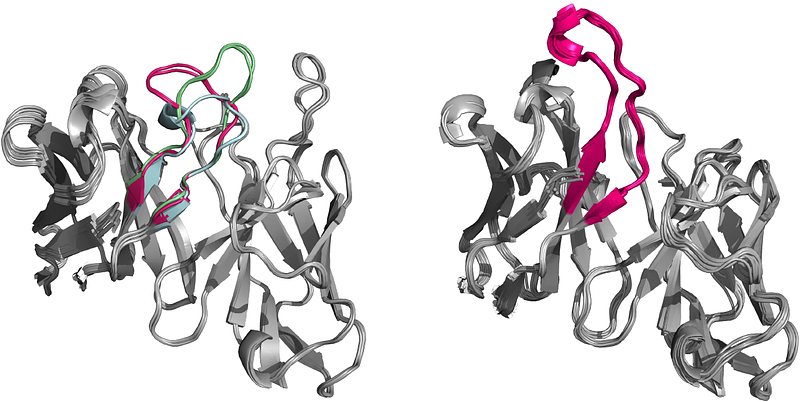Predicting the conformational flexibility of antibody and T-cell receptor CDRs

Predicting the conformational flexibility of antibody and T-cell receptor CDRs
Spoendlin, F. C.; Fernandez-Quintero, M. L.; Raghavan, S. S. R.; Turner, H. L.; Gharpure, A.; Loeffler, J. R.; Wong, W. K.; Georges, G.; Bujotzek, A.; Ward, A. B.; Deane, C. M.
AbstractMany proteins are highly flexible and their ability to adapt their shape can be fundamental to their functional properties. We can now computationally predict a single, static protein structure with high accuracy. However, we are not yet able to reliably predict structural flexibility. A major factor limiting such predictions is the scarcity of suitable training data. Here, we focus on predicting the structural flexibility of the functionally important antibody and T-cell receptor CDR3 loops. We extracted a dataset of CDR3 like loop motifs from the PDB to create ALL-conformations, a dataset containing 1.2 million structures and more than 100,000 unique sequences. Using this dataset, we develop ITsFlexible a method classifying CDR3 flexibility, which outperforms all alternative approaches on our crystal structure datasets and successfully generalises to MD simulations. We also used ITsFlexible to predict the flexibility of three completely novel CDRH3 loops and experimentally determined their conformations using cryo-EM.